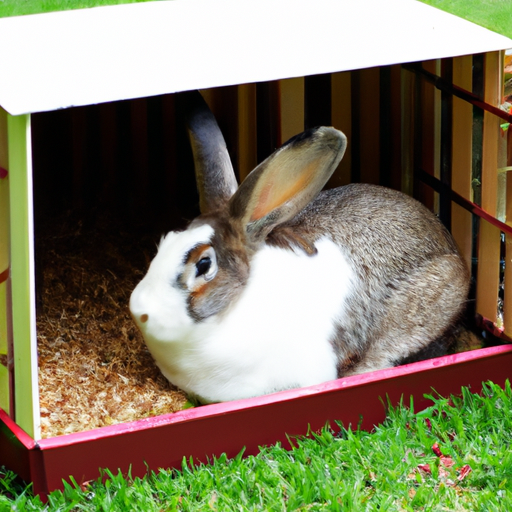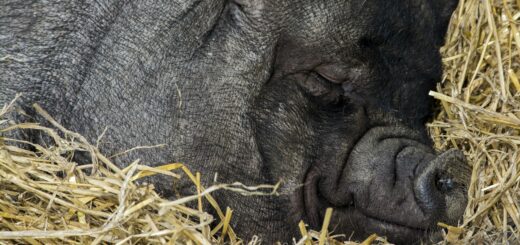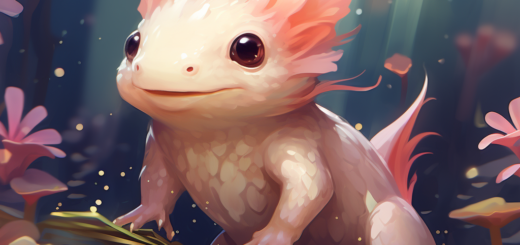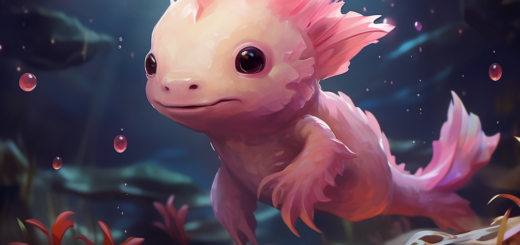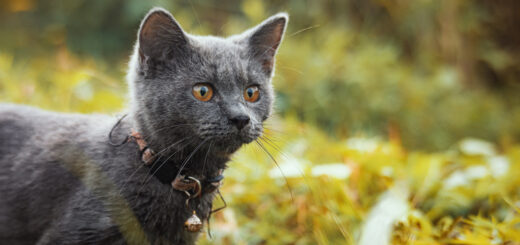Rabbit Hutch Design: Creating A Safe And Comfortable Home For Your Bunny
If you’re a proud bunny owner, then you know how important it is to create a safe and comfortable home for your furry friend. A well-designed rabbit hutch is essential in providing the ideal living environment for your bunny. From the materials used to the layout and features, each aspect plays a crucial role in ensuring your bunny’s happiness and well-being. In this article, we will explore some key considerations and tips to help you design the perfect rabbit hutch, so your bunny can enjoy their own cozy sanctuary.
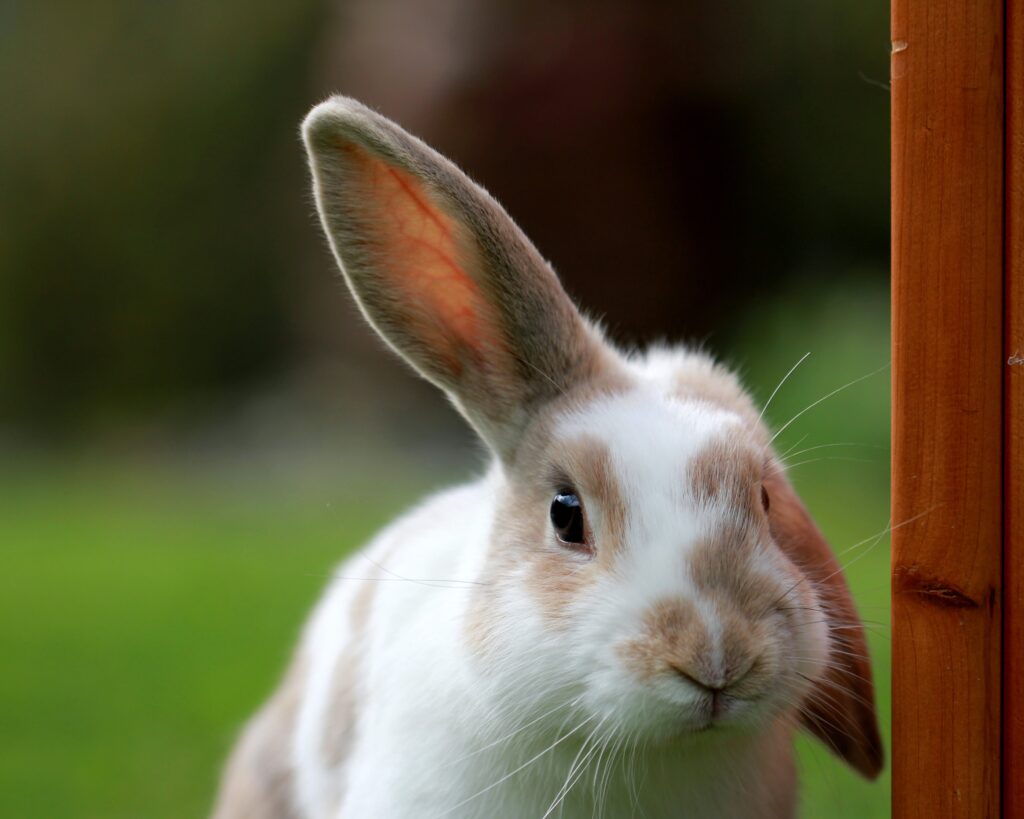
This image is property of images.unsplash.com.
Choosing the Right Location for the Hutch
Outdoor or Indoor?
When determining where to place your rabbit hutch, you’ll need to first consider whether it will be located outdoors or indoors. Outdoor hutches provide rabbits with the opportunity to experience fresh air, natural sunlight, and the sights and sounds of nature. However, it’s important to ensure that the hutch is sheltered from extreme weather conditions such as excessive heat, cold, wind, or rain. On the other hand, indoor hutches offer the advantage of being in a controlled environment, providing protection from the elements.
Protection from Extreme Weather
Regardless of whether your hutch will be located outdoors or indoors, it is crucial to provide adequate protection from extreme weather conditions. During hot summer months, make sure the hutch is placed in a shaded area to avoid overheating. Consider using reflective materials or installing a ventilation system to help regulate the temperature inside the hutch. In colder climates, choose a location that offers protection from cold drafts and ensure the hutch is insulated to keep your furry friend warm and cozy.
Consideration of Predators
If you plan to keep your rabbit hutch outdoors, it’s necessary to take into account potential predators in your area. Ensure the hutch is designed with predator-proof features such as secure locks, reinforced wiring, and a sturdy roof. Additionally, be mindful of nearby trees or structures that predators, like raccoons or birds of prey, could use as a means to access the hutch. By carefully selecting a location that minimizes predator risks, you can provide your bunny with a safe and secure environment.
Size and Layout of the Hutch
Sufficient Space for Exercise
Rabbits are naturally active animals that require plenty of space to engage in physical exercise. When choosing a hutch, opt for one that provides ample room for your bunny to hop, run, and play. The minimum recommended size for a hutch is 4 square feet for small to medium-sized rabbits, but it’s always best to go bigger if space allows. Remember, the more space your rabbit has to move around, the happier and healthier they will be.
Separate Sleeping and Eating Areas
Similar to humans, rabbits appreciate having designated areas for sleeping and eating. Look for a hutch that includes separate compartments or levels to accommodate these needs. This separation not only promotes proper hygiene, but it also allows your bunny to have a quiet and cozy sleeping area away from their food and water sources. This distinction will help your rabbit establish a sense of routine and structure within their living space.
Easy Access for Cleaning and Maintenance
Maintaining a clean hutch is vital for the well-being of your rabbit. Consider a hutch that allows for easy access when it comes to cleaning and maintenance. Look for features such as removable trays, detachable partitions, or hinged doors that make it effortless to reach all areas of the hutch. Being able to regularly clean and disinfect your bunny’s living space will help prevent the buildup of odor, mold, and bacteria, ensuring a healthy and pleasant environment for your pet.
Materials for the Hutch
Sturdy and Durable Construction
The construction materials of the hutch are crucial for its longevity and durability. Choose a hutch made from sturdy materials such as solid wood or metal to withstand the test of time and provide a secure enclosure for your bunny. Avoid huts made from flimsy plastic or weak wire that can easily be chewed through or damaged. By opting for a solid construction, you can ensure the safety and security of your furry companion.
Non-toxic and Safe Materials
Rabbits are natural chewers, so it’s vital to select a hutch made from non-toxic materials. Avoid materials treated with harmful chemicals or paints that could pose a risk if ingested. Opt for natural, untreated wood and safe coatings that are specifically designed for use around animals. By prioritizing the use of non-toxic materials, you can further safeguard your bunny’s health and well-being.
Weather-resistant Features
If your hutch will be located outdoors, it’s important to choose materials that can withstand various weather conditions. Look for a hutch that is treated or coated to be weather-resistant, protecting it from rain, sun exposure, and humidity. Consider using weatherproof covers or tarps to provide additional protection during extreme weather events. By selecting a hutch with weather-resistant features, you can ensure the longevity of the structure and the comfort of your pet.
Flooring and Ground Cover
Comfortable and Hygienic Flooring
The flooring of your bunny’s hutch should prioritize comfort and hygiene. Opt for a hutch that has a solid, flat surface to prevent injury to your rabbit’s sensitive paws. Avoid wire mesh flooring, as it can be uncomfortable, or even harmful, for your bunny’s delicate feet. Instead, choose a hutch with a solid base or consider adding a removable tray that can be lined with a soft, absorbent material for easy cleaning and maximum comfort.
Natural and Safe Ground Cover Options
If your rabbit hutch is located outdoors, consider adding a natural ground cover to enhance your bunny’s living environment. Options such as untreated grass or straw can provide a soft surface for your rabbit to explore and play on. Additionally, these natural ground covers can offer some insulation and help regulate temperature within the hutch. Ensure that the chosen ground cover is safe for your rabbit to nibble on and free from pesticides or harmful chemicals.
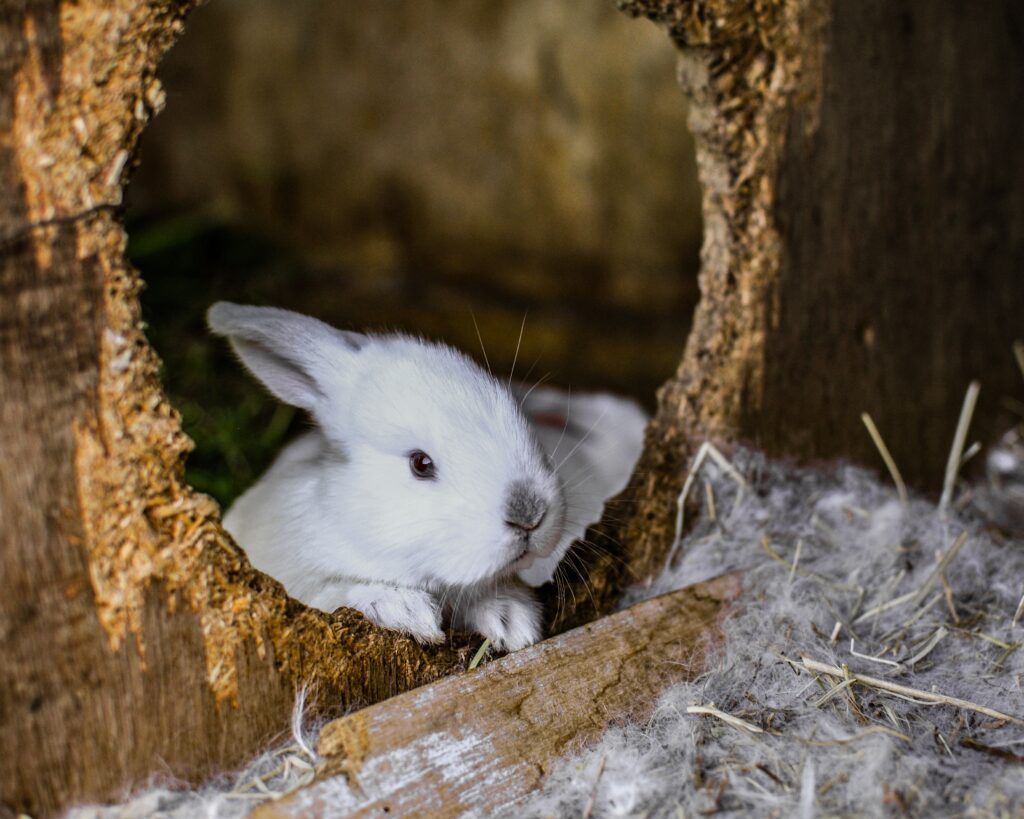
This image is property of images.unsplash.com.
Ventilation and Temperature Control
Adequate Air Flow
Proper ventilation is essential for the health and well-being of your rabbit. A hutch with adequate air circulation helps prevent the buildup of moisture and unpleasant odors, reducing the risk of respiratory issues. Look for huts that feature ventilation grilles, mesh panels, or strategically placed windows to ensure proper airflow. Regularly monitor the air quality inside the hutch and make adjustments as needed to maintain optimal ventilation.
Insulation for Extreme Temperatures
To protect your rabbit from extreme temperatures, insulation is crucial. A hutch with insulation materials, such as foam or double-walled construction, can help regulate temperature and provide a comfortable living environment for your bunny. During cold winter months, consider adding insulating layers or blankets to further enhance the hutch’s ability to retain heat. Similarly, during hot summer months, provide shade or insulation to keep the hutch cool and prevent overheating.
Avoidance of Drafts
Drafts can cause discomfort and health issues for your rabbit, so it’s important to ensure that the hutch is free from drafts. Inspect the hutch thoroughly and seal any gaps or cracks that could allow cold air to enter. Additionally, avoid placing the hutch in areas with constant wind or where it may be exposed to air currents. By taking measures to eliminate drafts, you can provide your bunny with a cozy and draft-free living space.
Security Measures
Predator-Proofing the Hutch
Protecting your rabbit from potential predators is paramount. Ensure that the hutch is designed with predator-proof features such as sturdy locks and reinforced wiring. Double-check that all entry points, including hutch doors and windows, are secure and cannot be easily pried open. Regularly inspect the hutch for signs of wear or damage and promptly make any necessary repairs. By prioritizing security measures, you can provide your bunny with a safe and secure habitat.
Ensuring Escape-Proof Enclosure
Rabbits are known for their agility and ability to squeeze through small openings. To prevent any escape attempts, it’s important to ensure that the hutch is escape-proof. Inspect the hutch for any gaps or openings that your rabbit could potentially exploit. Pay attention to the integrity of the wiring or mesh, making sure it is tightly secured and free from any holes that your rabbit could chew through. By creating a secure and escape-proof enclosure, you can give yourself peace of mind knowing that your rabbit is safe within their living space.
Safe Access Points
Easy and safe access to the hutch is essential for both you and your rabbit. Choose a hutch that has well-designed access points, such as hinged doors or removable sections, that allow you to interact with your rabbit without causing stress or injury. Avoid huts with small or awkward openings that could lead to accidental bumps or injuries when trying to reach in or interact with your furry friend. By prioritizing safe access points, you can foster a positive and enjoyable bonding experience with your rabbit.
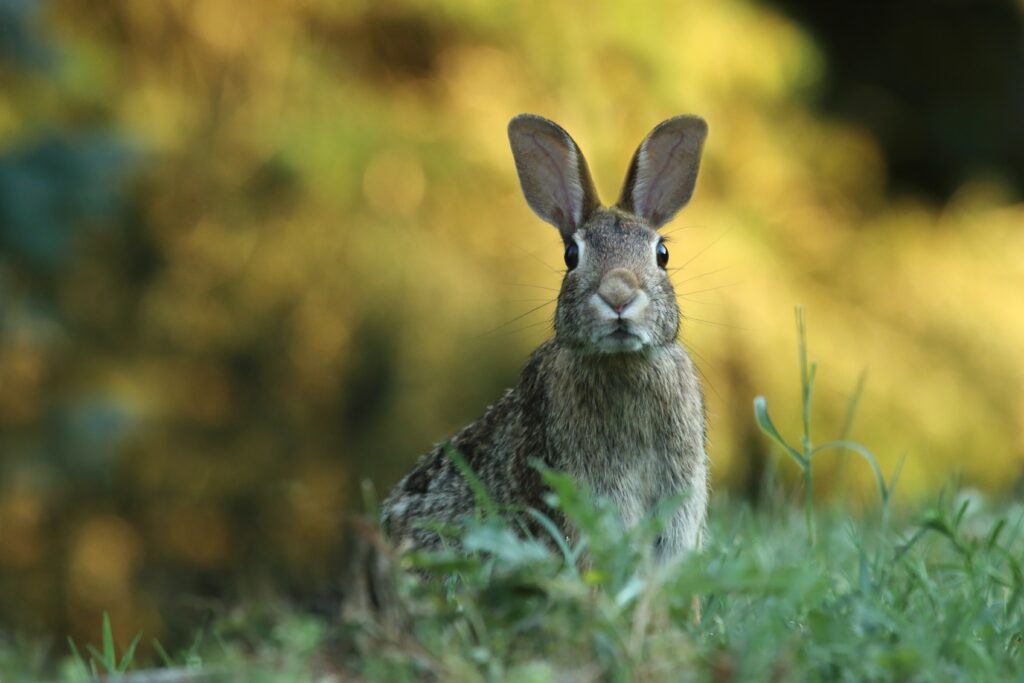
This image is property of images.unsplash.com.
Furnishing the Hutch
Comfortable Bedding and Nesting Materials
A cozy and comfortable bed is essential for your rabbit’s well-being. Select bedding materials that are safe, absorbent, and comfortable for your bunny to rest on. Options such as hay, straw, or paper-based bedding can provide the necessary warmth and cushioning. Additionally, consider providing soft nesting materials, such as fleece or shredded paper, to create a cozy space for your rabbit to relax and retreat to. Regularly check and replace the bedding to maintain cleanliness and ensure your rabbit’s comfort.
Appropriate Toys and Enrichment
To keep your bunny entertained and mentally stimulated, provide appropriate toys and enrichment items within the hutch. Choose toys that are specifically designed for rabbits and made from safe and chewable materials. Options such as wooden chew toys, cardboard tubes, or puzzle feeders can help prevent boredom and encourage natural behaviors. Rotate the toys regularly to keep your rabbit engaged and maintain their interest. By providing enrichment, you can promote a happy and active lifestyle for your bunny.
Food and Water Containers
Ensure that your rabbit’s hutch is equipped with suitable food and water containers that are easy to access and clean. Look for dishes or bowls that are specifically designed for rabbits and are made from safe and non-toxic materials. Choose containers that are stable and cannot be easily tipped over. Regularly check and clean the dishes to prevent the buildup of bacteria or mold. By providing clean and accessible food and water containers, you can ensure that your bunny stays well-fed and hydrated.
Maintenance and Cleaning
Regular Cleaning Schedule
Maintaining a clean hutch is essential for your rabbit’s health and well-being. Establish a regular cleaning schedule to keep the hutch hygienic and odor-free. Remove soiled bedding, droppings, and uneaten food daily to prevent the buildup of bacteria. Thoroughly clean the hutch and all accessories on a weekly basis using safe and effective cleaning products. By adhering to a regular cleaning routine, you can create a comfortable and healthy living space for your bunny.
Safe and Effective Cleaning Products
When cleaning the hutch, it’s important to use safe and effective cleaning products. Avoid harsh chemicals or disinfectants that may be toxic to your rabbit. Instead, opt for mild, rabbit-safe cleaners or natural alternatives such as vinegar or baking soda. Always read and follow the instructions provided by the manufacturer when using any cleaning products. By using safe and effective cleaning products, you can maintain a clean and sanitized environment for your furry friend.
Preventing Mold and Odor
To prevent the buildup of mold and unpleasant odors in the hutch, it’s essential to maintain good ventilation and cleanliness. Ensure that the hutch has proper airflow and is not overly crowded, as this can contribute to moisture retention and the growth of mold. Regularly remove soiled bedding and uneaten food, as these can generate odors if left unattended. Consider using absorbent materials or liners to help control moisture and prevent odor. By taking proactive measures, you can ensure a fresh and odor-free living space for your rabbit.
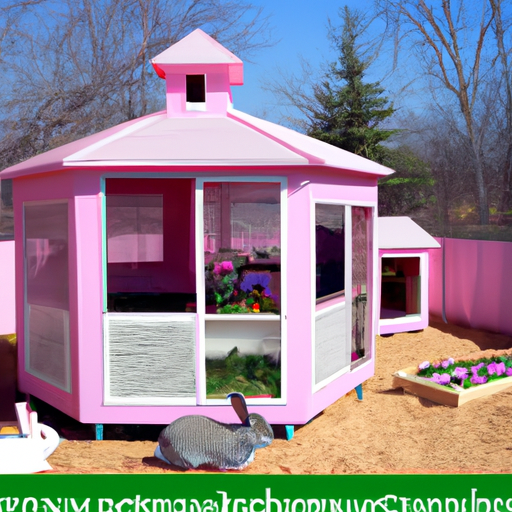
Health and Safety Considerations
Regular Veterinary Check-ups
Just like any other pet, rabbits require regular veterinary check-ups to ensure their health and well-being. Schedule routine visits with a rabbit-savvy veterinarian who can provide necessary vaccinations, check for any underlying health conditions, and offer advice on proper nutrition and care. Additionally, stay vigilant for any signs of illness or changes in behavior and promptly seek veterinary assistance. By prioritizing regular veterinary care, you can address any potential health concerns early on, ensuring a happy and healthy life for your bunny.
Protection from Parasites and Diseases
Preventing parasites and diseases is essential for your rabbit’s overall health. Keep your rabbit’s hutch clean and dry to minimize the risk of infestations. Regularly check for external parasites such as fleas or mites, and promptly treat any signs of infestation. Ensure that your rabbit receives appropriate vaccinations to protect against common diseases. Additionally, practice good hygiene when handling your rabbit and regularly wash your hands to prevent the transmission of any potential pathogens. By implementing preventive measures, you can safeguard your bunny from parasites and diseases.
Safe Handling and Interaction
When interacting with your rabbit, it’s important to prioritize safety for both you and your furry friend. Approach your rabbit calmly and gently, avoiding sudden movements or loud noises that could startle them. Always support their hindquarters when picking them up to prevent injuries to their delicate backbones. Teach children how to handle rabbits safely and supervise their interactions to prevent any accidental harm. By practicing safe handling and interaction techniques, you can foster a positive and trusting relationship with your bunny.
Integration with the Surroundings
Blending with the Aesthetics of the Garden
If your hutch is located outdoors, consider integrating it with the aesthetics of your garden. Choose a hutch design and color that complements the surrounding environment, whether that’s through natural wood tones or coordinating with any existing outdoor structures. By blending the hutch seamlessly into the garden landscape, you can create a visually appealing and harmonious outdoor space.
Integration into Indoor Decor
For indoor hutches, it’s important to integrate them into your indoor decor in a way that is both functional and visually pleasing. Consider hutch designs that match your existing furniture or room color scheme. Incorporate decorative elements or accessories that enhance the overall aesthetics of the room while still prioritizing the comfort and well-being of your rabbit. By seamlessly integrating the hutch into your indoor decor, you can create a welcoming and inviting living space for your bunny.
Consideration of Neighbors
If you live in close proximity to neighbors, it’s essential to be considerate of their preferences and potential concerns. Ensure that the hutch is positioned in a way that minimizes noise disruption or unpleasant odors. Regularly maintain and clean the hutch to prevent any potential nuisances. Additionally, communicate with your neighbors about your intent to keep rabbits and address any questions or concerns they may have. By being considerate of your neighbors, you can help foster positive relationships within your community.
In conclusion, choosing the right location, size, and materials for your rabbit hutch, as well as considering factors such as ventilation, security, and integration with the surroundings, are all essential for creating a safe and comfortable home for your bunny. By providing a well-designed and thoughtfully furnished hutch, you can ensure the health, happiness, and overall well-being of your furry companion. Remember, a happy bunny is a healthy bunny!
